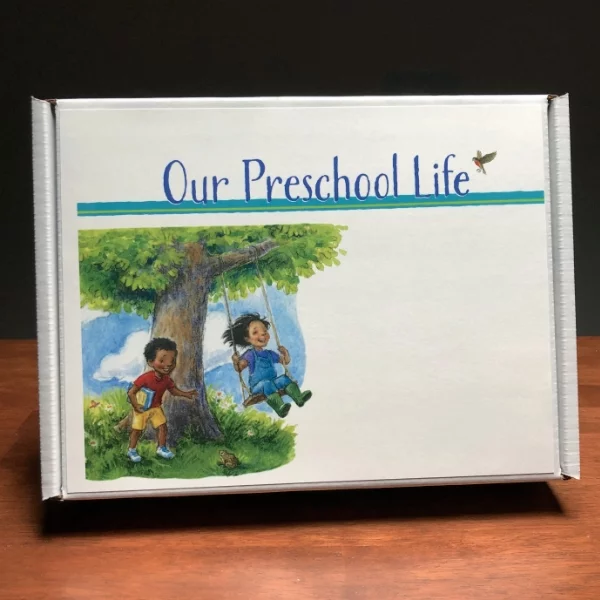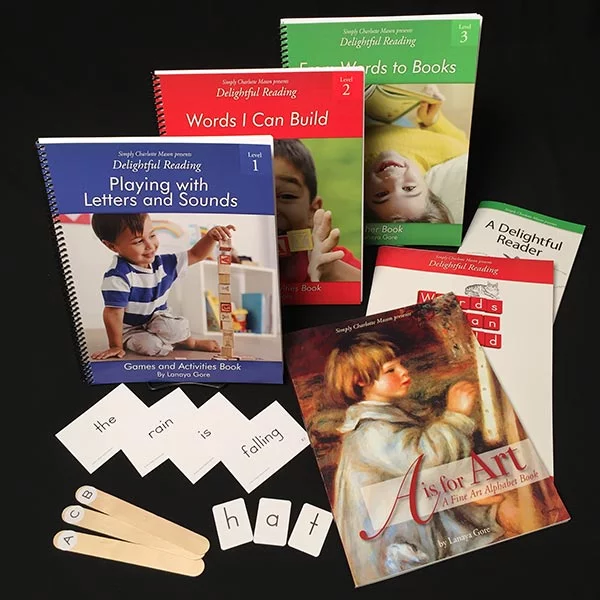Free shipping on USA orders over $129!
Preschool and Kindergarten Guide
Many moms have asked us, “What should I be doing with my 3- to 5-year-old children?” Instead of academic or social pressures, Charlotte Mason encouraged mothers to give their little ones a full six years of developing good habits, getting acquainted with nature, exploring with the five senses, growing in their spiritual lives, and playing outdoors.
What Preschool Should Look Like
1. Focus on the foundations
Habits, outside play, read-alouds, and Bible are most important. If you concentrate only on those, you’ll be doing just fine.
2. Include enrichment and beauty
Handicrafts, art, music, and poetry will enrich your child’s atmosphere and help him feel at home with those aspects of Charlotte Mason education when he starts “school work.”
3. Gently introduce academics as the child is ready
Reading, writing, and math may be added through informal activities as the child is ready. (Some may not be ready until they are older than five; that’s okay!)
Note: Keep in mind that if you are homeschooling your older children in a Charlotte Mason way, your little ones may listen in and learn along with them in many of these areas. For example, they may hear the Bible stories you read aloud and the Scripture verses you’re memorizing, they will see the artist’s pictures you’re studying, and more.
Charlotte Mason Preschool Curriculum


If you want regular help nourishing your little one with play-based learning, Our Preschool Life is a great resource! This monthly preschool subscription box brings you plenty of great preschool ideas to keep you supplied with fresh activities for your 3 to 5 year old. Inside you’ll find a picture book, art print, chore cards, stickers of nature friends, and more! The monthly magazine included in your box includes outdoor play ideas, rhymes and poems, songs and classical music, Bible stories, math activities, stories, help with good habits, games, and parenting tips.


Pair Our Preschool Life with the Delightful Reading Kit that best fits where your child is right now, and you have everything you need for making everyday life your child’s preschool or kindergarten curriculum. It’s preschool the way it was meant to be: informal, play-based learning in a loving and language-rich home.
Supporting Articles
The New Preschool Is Crushing Kids: An article that emphasizes the importance of giving preschool children an atmosphere full of living ideas (rather than facts to memorize) and meaningful conversation (rather than scripted lessons).
The Decline of Play in Preschoolers: A great article that highlights the benefits of free play and how necessary it is in the preschool years.
School Starting Age: The Evidence: The University of Cambridge summarizes a study that supports delaying formal schooling until age seven in School Starting Age.
Why Preschool Shouldn’t Be Like School: This article cites a study about the importance of free play and exploration with the senses.
Study finds improved self-regulation in kindergartners who wait a year to enroll: This article cites a study by Stanford that found strong evidence of mental health benefits in kindergarteners who wait a year to enroll in school.
Recommended Reading
You will find Charlotte Mason’s own words and practical encouragement for all of these areas in The Early Years: A Charlotte Mason Preschool Handbook.
The Importance of Being Little: What Preschoolers Really Need from Grownups by Erika Christakis seeks to describe what the perfect classroom preschool should look like and, in the process, outlines a compelling picture of preschool through everyday life at home.
The Enchanted Hour: The Miraculous Power of Reading Aloud in the Age of Distraction by Meghan Cox Gurdon gives fascinating scientific research that demonstrates the amazing benefits of reading together, especially in the preschool years.
